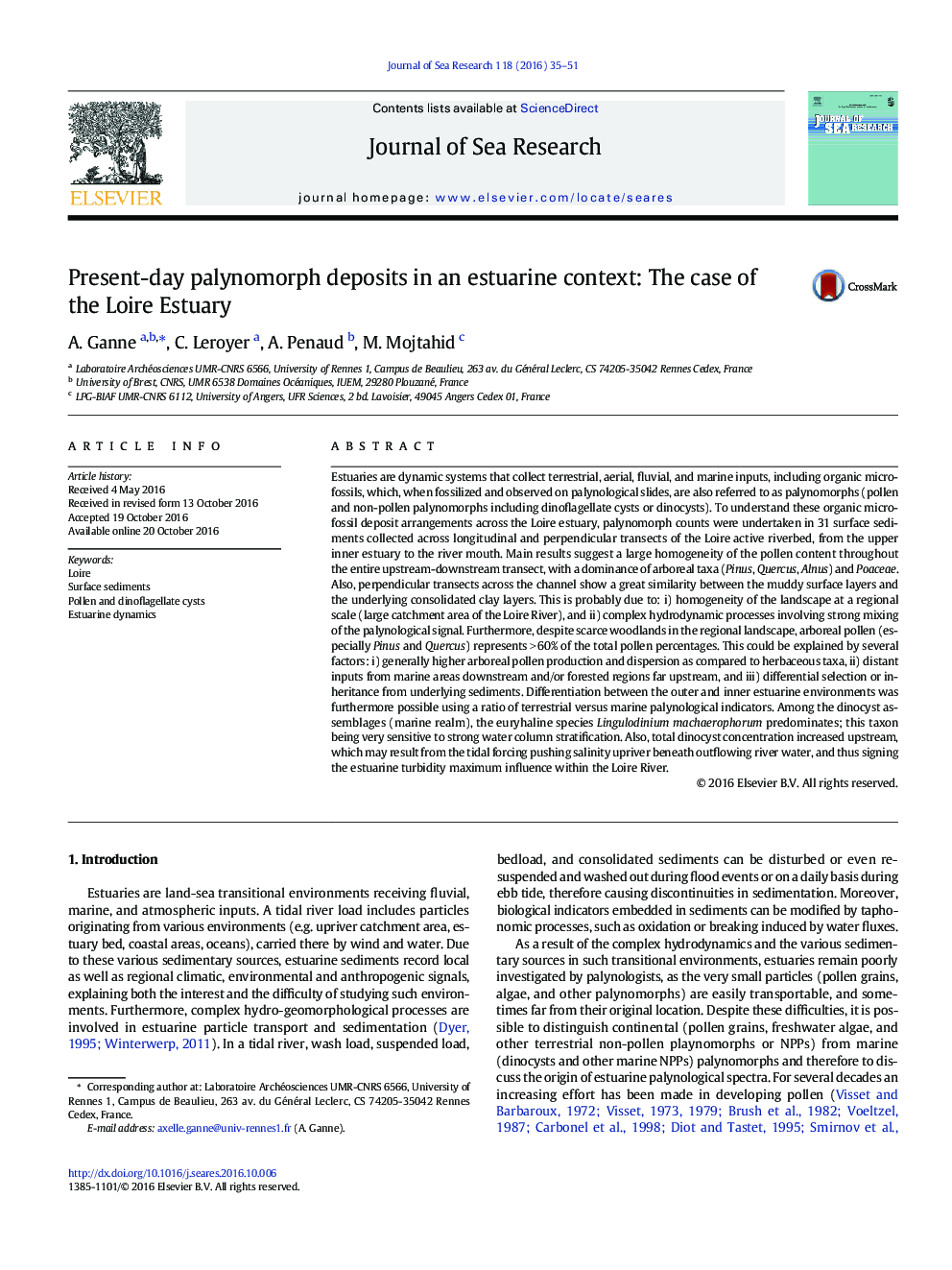| کد مقاله | کد نشریه | سال انتشار | مقاله انگلیسی | نسخه تمام متن |
|---|---|---|---|---|
| 5766119 | 1627457 | 2016 | 17 صفحه PDF | دانلود رایگان |

- Surface-sample palynofacies deposits are studied across the Loire estuary.
- Pollen spectra are homogeneous in the active Loire riverbed.
- Coniferous pollen and trilete spores frequencies depend on the distance to the sea.
- Among dinocysts, the euryhaline species Lingulodinium machaerophorum predominates
- This study aims to improve palaeoenvironnmental interpretations in estuaries.
Estuaries are dynamic systems that collect terrestrial, aerial, fluvial, and marine inputs, including organic microfossils, which, when fossilized and observed on palynological slides, are also referred to as palynomorphs (pollen and non-pollen palynomorphs including dinoflagellate cysts or dinocysts). To understand these organic microfossil deposit arrangements across the Loire estuary, palynomorph counts were undertaken in 31 surface sediments collected across longitudinal and perpendicular transects of the Loire active riverbed, from the upper inner estuary to the river mouth. Main results suggest a large homogeneity of the pollen content throughout the entire upstream-downstream transect, with a dominance of arboreal taxa (Pinus, Quercus, Alnus) and Poaceae. Also, perpendicular transects across the channel show a great similarity between the muddy surface layers and the underlying consolidated clay layers. This is probably due to: i) homogeneity of the landscape at a regional scale (large catchment area of the Loire River), and ii) complex hydrodynamic processes involving strong mixing of the palynological signal. Furthermore, despite scarce woodlands in the regional landscape, arboreal pollen (especially Pinus and Quercus) represents >Â 60% of the total pollen percentages. This could be explained by several factors: i) generally higher arboreal pollen production and dispersion as compared to herbaceous taxa, ii) distant inputs from marine areas downstream and/or forested regions far upstream, and iii) differential selection or inheritance from underlying sediments. Differentiation between the outer and inner estuarine environments was furthermore possible using a ratio of terrestrial versus marine palynological indicators. Among the dinocyst assemblages (marine realm), the euryhaline species Lingulodinium machaerophorum predominates; this taxon being very sensitive to strong water column stratification. Also, total dinocyst concentration increased upstream, which may result from the tidal forcing pushing salinity upriver beneath outflowing river water, and thus signing the estuarine turbidity maximum influence within the Loire River.
Journal: Journal of Sea Research - Volume 118, December 2016, Pages 35-51